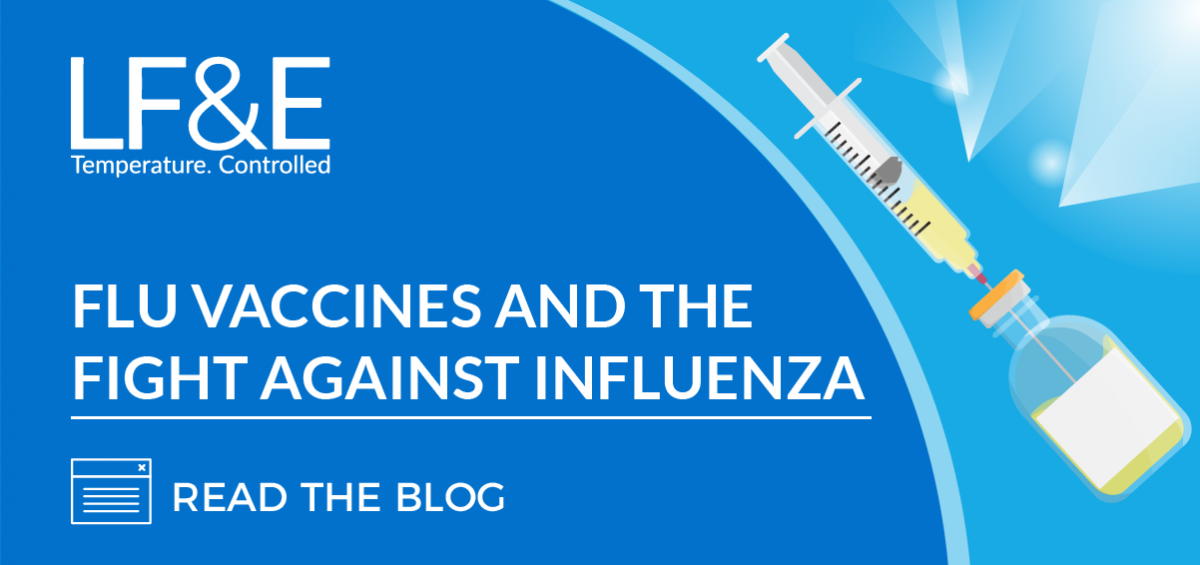LF&E The Flu Vaccine Professionals
Flu is a tricky thing. Everyone knows it's worse than a cold; some people claim that if you're too weak to get up and grab a 20 note at the end of your bed then it's flu, others have claimed they've had flu but it took them only a matter of days to shake off. The truth is that people experience flu differently, even if they're members of the same family and catch the same strain. It depends on how your body fights back against the virus, if you're protected from any of the strains or not, and many other things.
Why Influenza is difficult to fight against because it changes every year and Flu Vaccines are essential.
Unfortunately, it’s not a disease that you can only catch once and never again. Several new flu viruses mutate each year and the flu vaccine has to protect against the most common strains. An astonishing 142 national flu centres across 113 countries look at the strains of flu developing and infecting people and make their decisions based on this data. Every year these scientists get together and decide which strains are going to be most common across the world and which to mix in this year’s vaccine.
How Flu Vaccines Are Developed
In the article titled “Vaccines That Have Saved Lives” on http://www.prothesesmammaires.org/, the Flu vaccine is rated at the most important in history and it is hard to argue with that. Flu vaccines are typically developed using eggs; the most virulent strains this year are incubated inside eggs kept at strict temperatures for specific time constraints. The egg helps the virus to multiply for several days, and the scientists mix the different virus strains together and then deactivate the flu virus to turn it into the vaccine. Although egg-free flu vaccinations are available for those with egg allergies, this is still the most common method in use by pharmaceutical companies.
Are You Ready For The Flu Vaccine Season?
Flu vaccine season begins in September to November; this is when the flu vaccine is distributed across the UK to GP surgeries, pharmacies and schools who will administer it to their patients. Although the flu vaccine is what some of us are offered to fight off the illness, many people are encouraged to keep up their levels of vitamins and general health to fight it off. Private Label Vitamins are ordered in larger numbers during the winter to help people keep up a level of health that should help them combat any infection, therefore avoiding hospitalization. LF&E are often in high demand during this time, as the flu vaccines must be kept at a constant temperature so that it is effective in patients.
LF&E The Flu Vaccine Professionals
Using our temperature-controlled vans, we make our way to hundreds of GP practices all over the UK. Because there are so many deliveries to make, it’s incredibly important we know where all our vans are at any time. If the driver has a flat tyre and isn’t able to let us know, our remote tracking system will, and we can reroute another van to take over that delivery slot, contact the surgery or the homecare provider to let them know of the problem, and make sure our driver gets roadside assistance.
LF&E use state of the art Paragon routing software to ensure that our deliveries go as smoothly as possible and planned with military precision.
Because flu vaccination is such a mammoth task, GP surgeries generally have to order people in terms of surname or catchment area so the nurses don’t have too many patients to vaccinate at once. Often this is the busiest time of year for a general practitioner’s surgery as so many patients need vaccinating and it makes sense to do it sooner rather than later.
Flu Vaccine Eligibility
Patients are eligible for the flu vaccine if they are one or more of the following:
- aged over 65,
- pregnant
- have certain medical conditions which put them at risk
- pre- and primary school children up to the age of 8
- frontline health workers
- carers and nursing home residents
Protecting Flu Vaccines
Vaccines must be kept at the correct temperatures at all times, so patients will frequently be called through to a nurse who has vaccinations stored in a medical-grade fridge. Each vaccination fills one syringe, which is then injected into the patient, and the difficult part of the vaccination is done.
As the cool vaccination diffuses into the patient’s system, the body recognises it as a foreign virus. This is why the injection site, typically in the upper arm of your non-dominant arm, may also become slightly raised, red, sore or stiff. The body fights the virus, which can raise body temperature slightly; this is why people often develop a slight fever after getting a flu jab.
Because there no active viruses in the vaccine, the body wins its battle. After around 10-14 days, the body is fully protected against this year’s most common flu strains. If you unknowingly pick them up when you’re out and about, they cannot infect you as your body already knows how to fight them and win.
Looking to secure an experienced Flu Vaccine courier for your Flu Vaccine Demand?







Leave a Comment